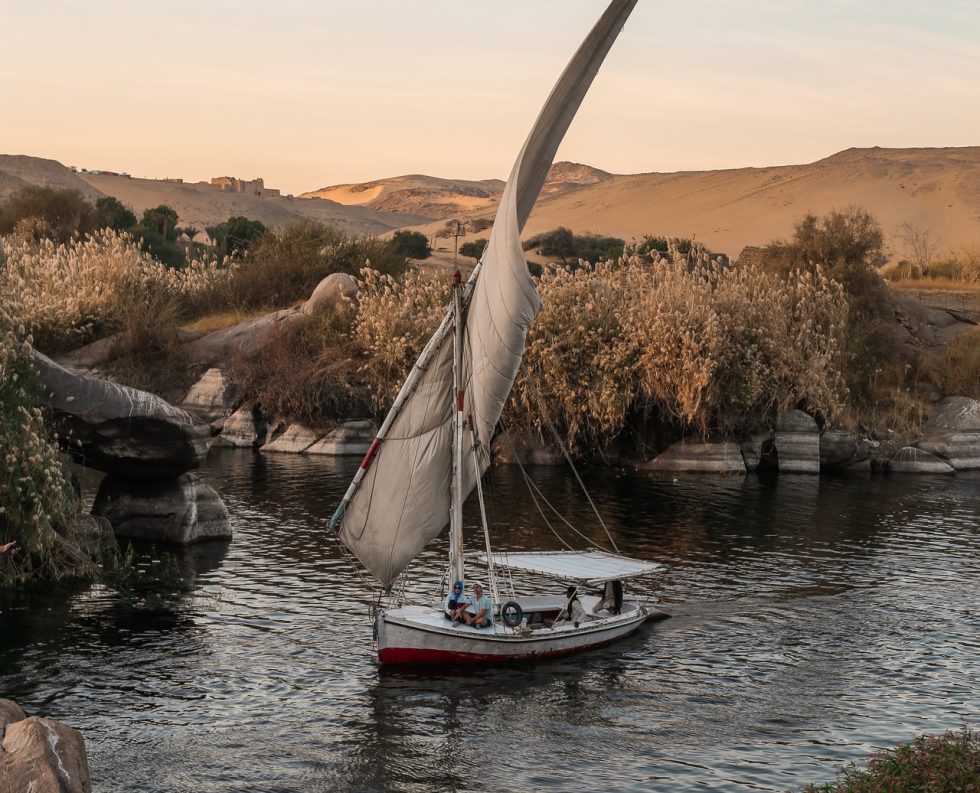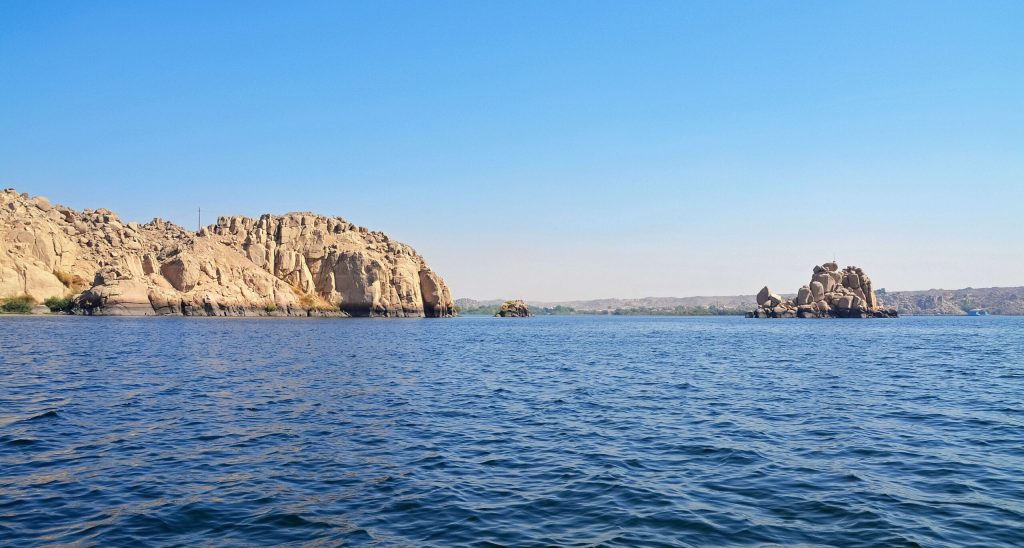Trivia: What is the longest river in the world?
Answer: The Nile


The Nile River, located in Africa, is the longest in the world. The Nile River flows through 10 different countries and covers almost 4,144 miles. The Nile starts at Lake Victoria and flows into the Mediterranean Sea. It passes through Sudan, South Sudan, Burundi, Rwanda, the Democratic Republic of the Congo, Tanzania, Kenya, Uganda, and Egypt.
Its drainage basin is one of the largest in the world. It’s slightly larger than that of the Congo River. The Nile has two major tributaries, the White Nile and the Blue Nile, contributing almost 19% of water flowing into Egypt.
The discovery of these two tributaries played a major role in the rise of Ancient Egypt. Without the water from these two rivers, Egypt could not have thrived as it did. These tributaries allowed them to irrigate and farm along the banks, supply water for drinking, and support the many cities that lined their banks.
The Nile played a major role in the history of civilization. Ancient Egyptian cities were built on both sides of the Nile because they allowed water, transportation, and fertile farmlands. It was home to over 100 pyramids visible from one side or another of its banks.
It was also crucial to many other civilizations that rose along the river’s path, including the Nubians, Ancient Greeks, Romans, and Byzantines. All of them marveled at the beauty that was produced from this river.
The Nile is also a vital source to many species, including water buffalo, Egyptian geese, ibis, and other animals that drink from its waters or live along its banks. It even acts as a barrier to crocodiles living in both fresh and saltwater.
Its most important role is in the irrigation of farmlands, with over 41 million people living off of the river’s resources. If these sources were lost, Egypt would become uninhabitable due to the heat that prevails without it.
The Egyptians worshiped this river and had many gods and goddesses that represented it. Osiris was one of these deities and is often depicted with the Nile River in his hands. The Nile was also considered a god named Hapi, who is sometimes shown as a man with breasts or as green stones representing fertility.
It’s been a source of life and death for many people. Most recently, in 2010, there was a severe drought that caused the river to dry up and leave millions of people without water. It’s feared that if this trend continues, famine will come about because there won’t be enough food produced on its banks.
The Nile River is truly one of the world’s most essential resources and a major tourist attraction where many people visit to see the beautiful sunrises and sunsets, which provide a rich backdrop of color reflected off its waters.


